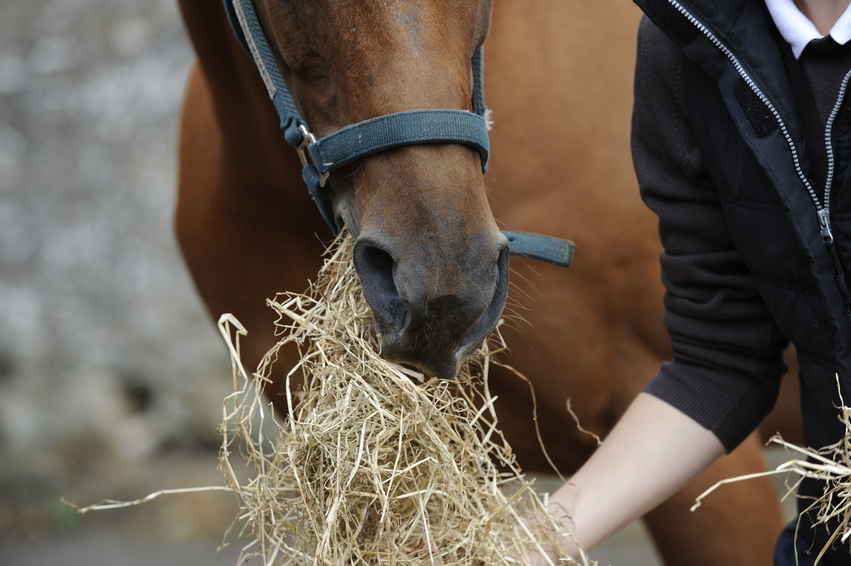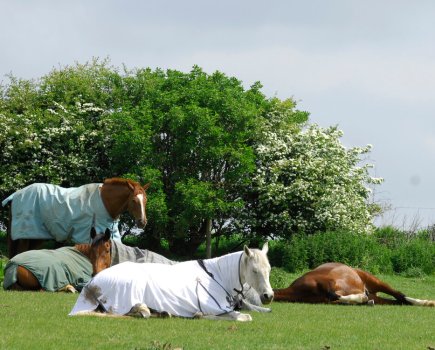Providing the correct diet for your horse is an essential part of being an owner, but it is hard to keep weight and condition on some horses with a lack of appetite and you are left wondering how to feed a fussy eater. It is possible to find ways to encourage a fussy eater to nibble their food and work out what they like to eat best, and in what way. All horses are individuals and what works for one might not work for another, so be flexible and be prepared to try different things.
“A variable appetite and weight loss may be cause for concern, so it’d be best to also discuss this issue with your vet,” says Tracey Hammond, a nutritionist for Dengie Horse Feeds. “If nothing is amiss, one of the first things to try is feeding both feed and forage ‘little and often’. This mimics a horse’s natural feeding regime, helps promote a healthy digestive system and avoids over-facing a horse with large meals. It will also keep the horse entertained for longer in their stable.”
Cafeteria feeding is a great way to feed a horse who is stabled because it provides a variety of fibre sources in haynets, buckets and piles around the stable for the horse to choose from. This encourages natural foraging behaviour, as horses are designed to do, and keeps the horse interested in their feed and can lead to them consuming more.
What to feed a fussy eater
For achieving condition without fizz, Tracey advises choosing feeds that are based on fibre and oil as this will provide slow-release energy.
“Some molasses in feed may be beneficial for tastiness, as horses tend to find molassed feeds more palatable, but look for those that contain lower levels of molasses, or choose feeds with added flavours or herbs to tempt the horse,” adds Tracey.
“Try different textures too — some horses prefer dry feeds while others prefer a wetter mash, for example. By offering these cafeteria-style and putting each feed in an individual bucket, you will soon see what your horse is choosing to eat and what they don’t like eating. You can then adapt what you are feeding accordingly.”
Time when you feed a fussy eater wisely, says Anna Ross
International dressage rider Anna Ross has fed a number of fussy eaters on her yard and offers the following advice.
“Observe your horse as they eat and make a note of what they pick out of their bucket and what they leave. You may see this changing daily,” says Anna. “Once you’ve got a good idea of this, put each separate feed, such as chaff, nuts, mix and sugar beet into different bowls so that the horse can pick at what they like most at that time.”
Anna also suggests changing when you feed your horse, but as always, make any changes gradually to avoid any digestive upset and risking colic.
“Try feeding your horse after they have been ridden and cooled off. They will be tired and so less likely to worry about distractions and more interested in eating their food,” adds Anna. “Hanging a haynet outside the stable so that the horse can watch what’s going on on the yard while they eat is a great way to keep them eating.
“When feeding medication, a good tip is to put it in a smaller ‘token’ feed before the horse has their normal feed. Make sure the feed is dampened well to mix the powder in and add some golden syrup to hide the taste of any bitter drugs.”
Feed small portions, more often, says Harry Meade
Top event rider Harry Meade recommends maintaining a routine, using portion control and having planned feed times, all of which works on his yard. Starting with small portions, Harry says that his own horses get four small feeds a day so that they’re never overfeed. Horses are designed to eat little and often, after all.
“We feed hard feed and hay at different times, mimicking the horses’ natural grazing habits,” adds Harry. “Plenty of turnout is also important. Our horses all get regular time in the field to eat grass, and we weigh them every week. Recording this data shows you if your horse loses weight at a particular time so you can pre-empt rather than react.”
Harry also advises considering the location of where you horse is stabled in order to tempt and feed a fussy eater.
“If you can, consider putting your horse in a stable near the feed room and feed them last. This way they will work up a bit of excitement and hopefully an appetite by the time their bucket arrives.”
If you find your horse leaves any feed in their bucket, Harry recommends emptying the bowl and scrubbing it clean.
“This means that there won’t be a continuous smell of feed in their stable,” he explains. It is also good management to keep your horse’s gear, especially feed buckets, clean and tidy.









